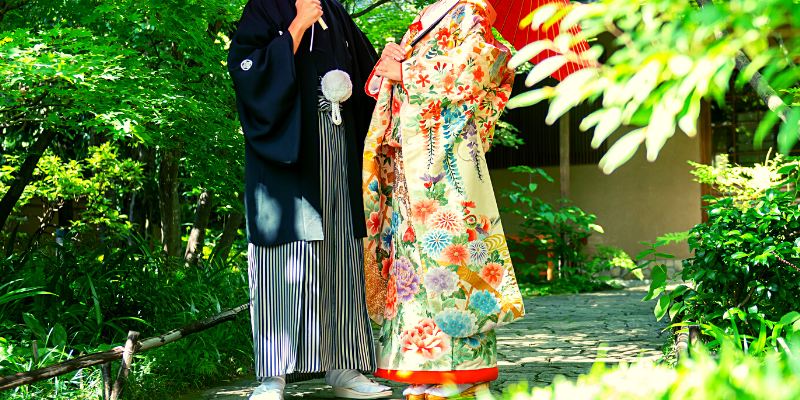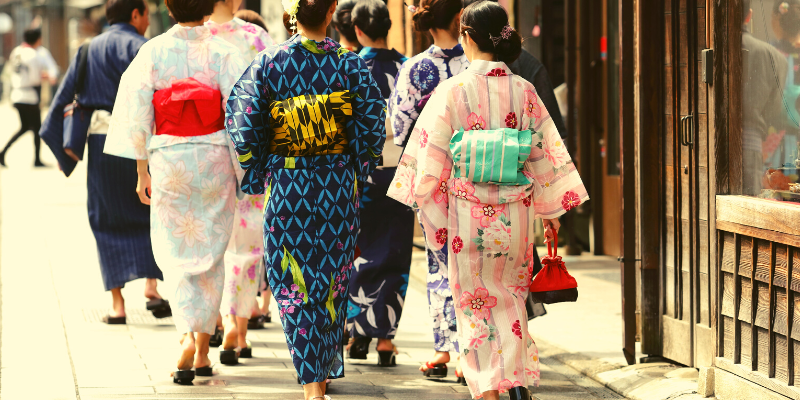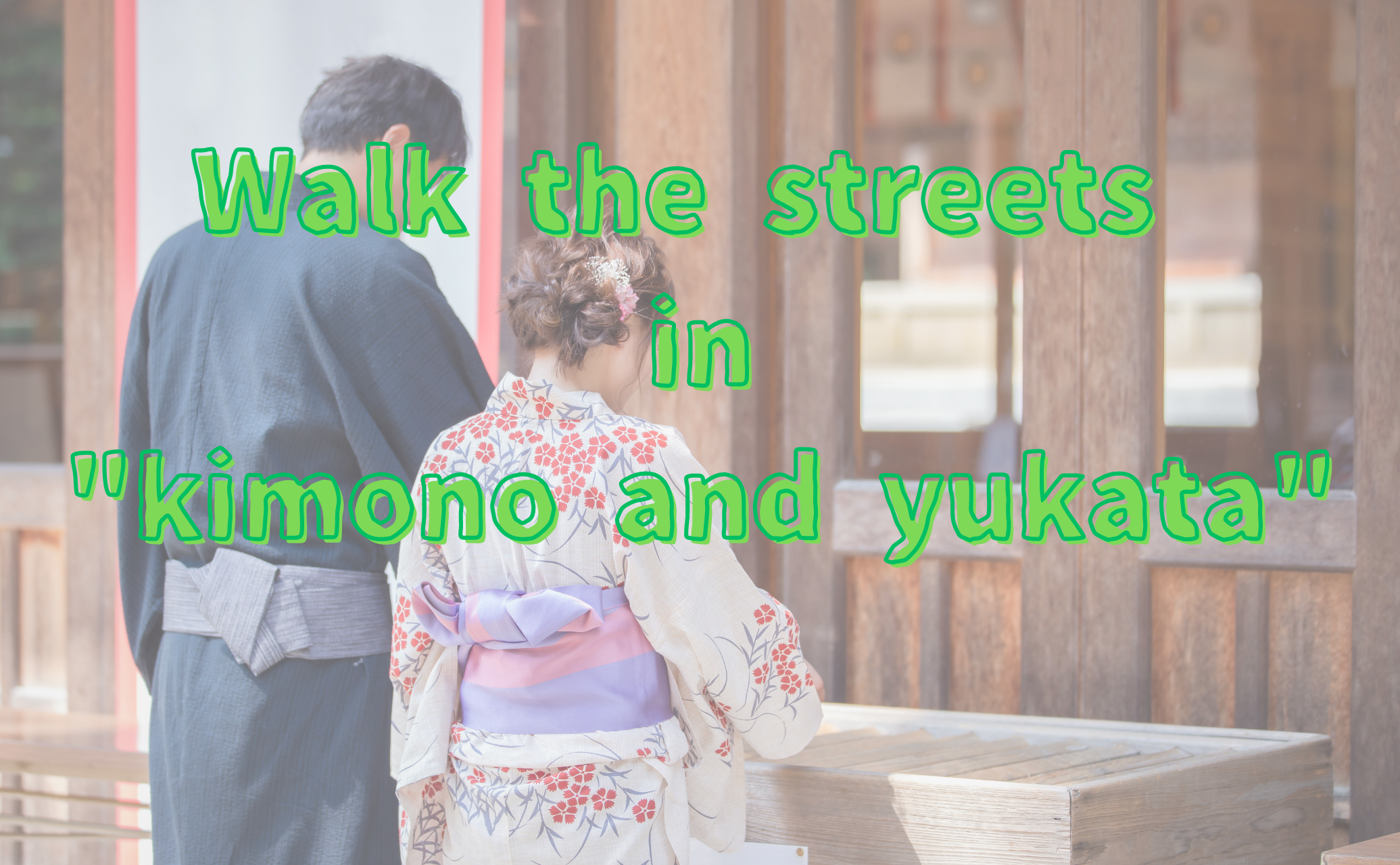Kimono and Yukata
The “kimono” is one of Japan’s most iconic garments. It is now an established part of fashion design. In modern Japan, kimonos are worn on special occasions, but “yukata” are a bit more familiar.
Yukata and kimono look the same. The difference is the material of the fabric and the ease of wearing. A yukata is made of summery materials and does not require multiple layers of clothing or an obi sash like a kimono. While kimonos can only be successfully worn with the help of others (of course, some people can dress themselves), yukata can be worn by oneself.
Kimono in Modern Japan
In modern Japan, wearing a kimono is something that happens only a few times in a lifetime for many people. Some people wear kimonos for work, and others wear kimonos on a regular basis, but for the majority of Japanese people, kimonos are something special.
First of all, there is an event called Shichi-Go-San when they are children. Girls wear kimonos at the ages of three and seven. Boys wear kimonos when they are five years old. The family takes pictures together and visits shrines. This custom is said to have started at court around 1200 and has continued to the present day.
Next is the Coming-of-Age Ceremony, which celebrates becoming an adult. At the coming-of-age ceremony, many women wear “furisode”. Furisode has longer sleeves than a regular kimono and is worn by young women before marriage. Many men also wear “haori-hakama” at the coming-of-age ceremony, but not as many as women who wear furisode. The haori-hakama is a formal Japanese kimono for men, characterized by a wide, pants-like kimono.

In addition, both men and women wear kimonos for Shinto or Buddhist wedding ceremonies. At some weddings, the mothers of the bride and groom wear kimonos. Also at funerals, when a husband or child dies, the wife or mother often wears a kimono.
Where to Wear a Yukata
While kimonos are generally considered formal, yukata are a bit more casual.
Yukata is worn in summer and is considered a symbol of coolness. (It is actually hot when you wear it! T-shirts and shorts are much cooler.)

Many people wear yukata to summer festivals and fireworks displays. Younger people tend to wear bright and gorgeous yukata rather than traditional patterns. This is partly because traditional patterns and good fabrics are expensive. A set of yukata is cheaper than a kimono.
Let’s walk around town wearing a kimono!
n recent years, walking around sightseeing spots in kimono has become a booming trend, especially among young people.
The old streets of Asakusa and Kyoto look great in kimono. If you are so inclined, why not take a stroll in a kimono?
There are services that lend you everything from kimono to footwear and dress you up. You can choose your favorite kimono, obi, and even accessories, and the price is usually around 10,000 yen. I recommend this service because you can choose what you want to wear from a variety of traditional, lace, and modern patterns.
Even for Japanese people, it is difficult to put on a kimono and fasten an obi by themselves. So if you want to have a kimono experience, it is better to leave it to the professionals.
Some places include hair-set and makeup that goes with kimono, but others charge extra.
Some places offer the option of walking around town in a kimono, taking it off at the hotel, and returning it to the hotel by delivery.
However, it is best not to walk far in a kimono because the kimono itself, as well as the geta (Japanese clogs) worn when wearing a kimono, can be tiring.
Let’s walk around the old streets in kimono and take many pictures.
Yukata at an onsen ryokan

A yukata is also similar to relaxation wear, and yukata are always provided at onsen ryokan.
In addition to wearing it as a nightgown, you can leave it on when you go out to eat or go to the bathhouse. It is also possible to go out nearby, for example, to take a stroll in the Onsen district.
The yukata provided at onsen ryokan are the easiest to put on and can be worn a little out of place. Simply slip the sleeves on, overlap the front, and tie the string obi at the waist.
The yukata is genderless and can be worn in the same way regardless of slight differences in body size.
Why not stay at an onsen ryokan as the easiest place to wear a yukata?
If you want to buy a kimono or yukata to take home
If you try on a kimono or yukata in Japan and like it, you can buy one to take home.
A set of yukata can be purchased at a clothing store or department store for about 20,000 yen if they are inexpensive. You can buy them at bargain prices at secondhand clothing stores.
To wear a kimono formally, you need to start with the undergarments, but you are free to enjoy them. Kimonos are also great for wearing as gowns.

